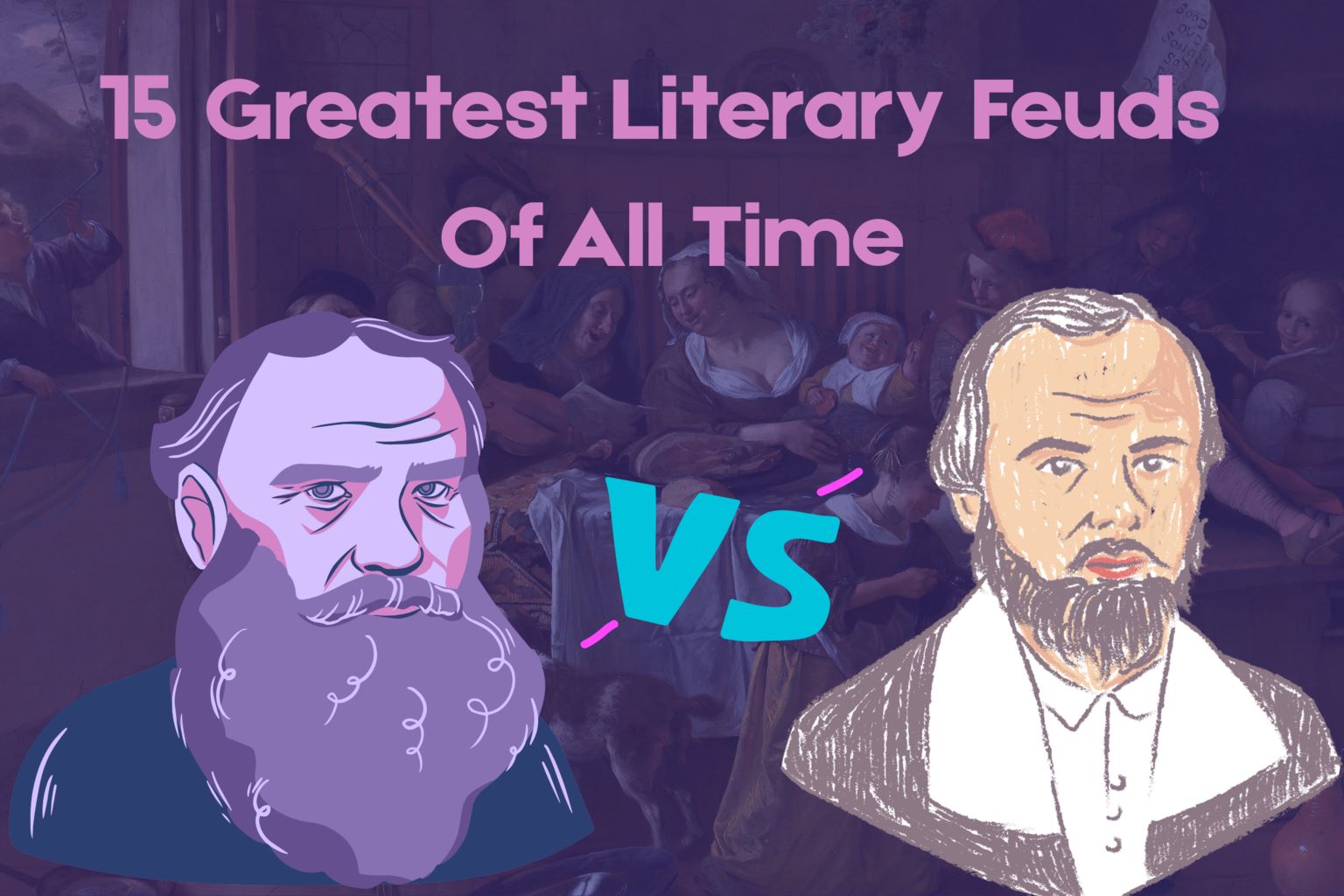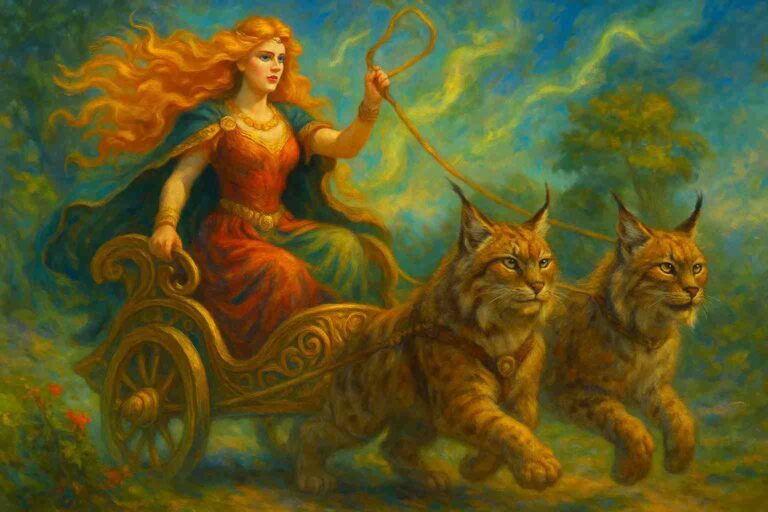The world of books is peopled by many great minds who are not always on the same page, often clashing spectacularly in literary feuds that erupt into headlines. Far from being polite disagreements, these literary feuds are dramatic, ego-driven conflicts that unfold through scathing critiques, barbed comments, snide remarks, and on occasion, actual punches. In a world where the written word is the currency, these verbal duels are analogous to open warfare.
Some of these feuds go back a long time with roots that run deep. They could stem from differences in artistic vision or egos that were hurt when one writer has the effrontery to criticize the other. Some were literary battles driven by ideology or politics, while others may have just stemmed from envy.
Observing these squabbles between these literary giants makes you realize that the literary world is not just about mutual praise and towering intellects. These 15 legendary literary feuds show what happens when pens are turned into swords and no quarter given.
1. Ernest Hemingway and F. Scott Fitzgerald
One of the most famous rivalries was the one between Hemingway, the terse adventurer and author who was known for his disturbing quotes, and Fitzgerald, the lyrical chronicler of the Jazz Age. They became close in the 1920’s in Paris, bonding over a mutual admiration for each other. Fitzgerald played a big role in guiding and encouraging Hemingway early in his career.
Over the years, Hemingway became increasingly critical of Fitzgerald, and his initial constructive criticism soon turned personal. His critique of Fitzgerald’s “Tender Is The Night” in a private letter set the stage for the gradual decline in their relationship. The barbed critiques and wounded pride created a lasting feud that is now part of literary lore.
2. Norman Mailer and Gore Vidal
In a 1971 episode of The Dick Cavett Show, Norman Mailer and Gore Vidal, two renowned American literary figures, began a discussion that quickly degenerated into a physical brawl. The issue was an essay Vidal had written in The New York Review of Books in which he tore into Mailer’s position on women’s lib. The discussion quickly degenerated into a physical brawl, with Mailer head-butting Vidal backstage, and both trading insults in front of the stunned audience.
The physical aggression wasn’t the only thing that made this confrontation so memorable. It was more the collision of two towering egos, Vidal’s cold wit versus Mailer’s macho bravado. The clash remains one of the most visceral literary feuds ever when literary refinement was cast aside for unfiltered vitriol.
3. Mary McCarthy and Lillian Hellman
One of the memorable female author feuds that erupted on The Dick Cavett Show in 1980 was one between Mary McCarthy and Lillian Hellman. McCarthy had said during the interview that Hellman was a “bad writer, a dishonest writer” and declared that “every word she writes is a lie”.
Hellman responded to this statement with a $2.25 million libel suit that laid bare their ideological divide over communism. The feud had been an ongoing one, and the trial was dropped only after Hellman died in 1984. It remains one of the most intense literary feuds in America, a confrontation that turned the public spotlight onto issues such as honesty and memory while blurring the lines between fact and fiction.
4. William Faulkner and Ernest Hemingway
Two giants of 20th-century American literature were Ernest Hemingway and William Faulkner. They shared a friendship built on mutual respect, but underneath the admiration lay a fierce rivalry. At a gathering at the University of Mississippi in 1947, Faulkner ranked himself above Hemingway in the pantheon of American greats and criticized his writing for lacking “courage”, implying that Hemingway avoided challenging words and ideas.
Hemingway shot back at Faulkner’s self-praise and accused him of verbosity fuelled by alcoholism. Their shots at each other continued in public and private exchanges. This is an example of a literary feud where pride, style, and reputation meet, and proof of how even the most talented of writers can have such fragile egos.
5. Mark Twain and James Fenimore Cooper
In a blistering critique that enumerated the number of literary rules broken, Mark Twain ripped into James Fenimore Cooper. His famous words of wisdom were that Cooper scored “114 offenses against literary art out of a possible 115”. His “sulfurous grumblings,” as described by Sydney Krausse, were directed against Romantic excess. He mocked Cooper’s dialogue, prose, as well as improbable plots as typical of the romantic genre.
Scholars argue that this feud highlighted the shift from Romanticism to Realism in American literature. It wasn’t just a polite disagreement over writing styles. It was a declaration that the time for flowery fiction was over.
RELATED READING: 15 Greatest Love Letters Ever Written In History
6. Edgar Allan Poe and Rufus Wilmot Griswold
Few literary feuds are as enduring as the one between Edgar Allen Poe and Rufus Griswold, the poet and critic. They exchanged plenty of professional slights and insults during Poe’s lifetime. It was after Poe’s tragic death that Griswold penned his scathing obituary, claiming that Poe’s death would cause few to grieve.
Later, he expanded his unfavorable biography of Poe so that almost a quarter of a century later, readers still had an unfavorable opinion of him. Scholars today view Griswold’s account as a character assassination, a smear campaign that shows how potent the pen can be and just how vicious literary rivalries can be.
7. T. S. Eliot and Ezra Pound
The dynamic between T. S. Eliot and Ezra Pound as poet and editor reveals a lot about the evolution of modern poetry and their subsequent feud. In editing Eliot’s masterpiece, The Waste Land, Pound went so far as to excise entire sections from the poem, referring to himself as the midwife of the poem. “I advise you NOT to print Gerontion as prelude,” were his words to Eliot.
Eliot pushed back, wanting more control over his work and what began as a respectful editorial collaboration soon descended into a bitter feud. Their clash of wills made this one of the most fascinating feuds in modern literary history.
8. Virginia Woolf and Arnold Bennett
Theirs was a clash of visions, with Virginia Woolf espousing a modernist vision while Arnold Bennett was more like traditional realism. In her essay “Mr. Bennett and Mrs. Brown”, Woolf criticized Bennett’s detailed descriptions, insisting that they missed the deeper and more subjective aspects of human experience. Bennet’s response was polite but dismissive, and he referred to Woolf’s style as overly obscure and elitist.
Their feud highlights the pivotal debate in early 20th-century literature, whether fiction should capture external reality or inner consciousness. Their rivalry was philosophical and helped shape the evolution of English literature.
9. C. S. Lewis and J. R. R. Tolkien
Both C. S. Lewis and J. R. R. Tolkien were friends and part of a close-knit circle at Oxford. Yet their approach to writing differed diametrically, and this difference was at the root of the friction between them. Tolkien’s approach, as outlined in “On Fairy-Stories”, was to keep his fantasy worlds independent and consistent, with the author’s world playing no role.
Lewis completely ignored that rule in Narnia and combined all kinds of mythology with the real world. Their friendly debate wasn’t just a matter of style or preference; it shaped the very nature of modern fantasy. Their discussions revealed a gentle but firm feud over philosophy, which enriched both legacies.
10. James Joyce and Samuel Beckett
Samuel Beckett looked upon James Joyce as his mentor in the 1930s and assisted him on “Finnegans Wake”. Soon after, however, Beckett realized that he needed to step out of his mentor’s shadow and discover his truth. His remark in 1932, “I vow I will get over J. J. ere I die” stemmed from this need.
The decision marked a turning point in their relationship, with Beckett moving away from Joyce’s lush style and embracing the route of minimalism with language that was stripped down to its essence. Scholars today describe their relationship as a creative struggle, not a hostile feud, with Beckett’s austere style being a counterpoint to Joyce’s modernism.
RELATED READING: 15 Famous Historical Figures And Their Dark Secrets
11. George Orwell and H. G. Wells
As a rising light in the literary world, George Orwell was a great admirer of H. G. Wells. This, however, changed as the years went by, and by 1937, Orwell grew increasingly critical of Wells and his utopian views, labelling them as naive. This increasing criticism matured into a full-fledged feud in Post-war London when the tone turned to downright caustic, and Orwell accused Wells of oversimplifying political realities.
Their feud stemmed from Orwell’s perception of Wells’ political position on totalitarian dictatorships and human rights. This feud was a personal one, rooted in political and philosophical disagreement, which may have well shaped Orwell’s dystopian vision.
12. V. S. Naipaul and Paul Theroux
V.S. Naipaul, the Nobel Prize-winning author, and his American protégé, Paul Theroux, had a falling out when, in 1996, Naipaul auctioned off signed copies of Theroux’s books. Their relationship grew strained with Theroux referring to Naipaul as “a cruel streak” in his memoir, Sir Vidia’s Shadow. That anger fuelled a feud that went on for over two decades until the two buried the hatchet at the Jaipur Literary Fest in 2011. Naipaul broke down after being praised and compared to Charles Dickens by Theroux.
The feud underscores how the fragile egos of brilliant men who are used to wielding words as weapons in their profession can also be easily hurt by them. It is a story of wounded trust, amends, and redemption played out over a long time.
13. Ernest Hemingway and John Dos Passos
The friendship between Ernest Hemingway and John Dos Passos began during the Spanish Civil War when both were comrades-in-arms. They bonded over their shared hatred for fascism. Passos had another friend during this period, the Spaniard José Robles, who was executed in 1937.
The execution was a wake-up call for Passos, who began to question the communist methods supported by Hemingway. Their friendship broke very publicly, and Hemingway considered Possos’ disillusionment as a betrayal. Marked with plenty of accusations of cowardice, their feud endured until Dos Passos’ passing. It was an ideological feud born out of war, politics, and grief, a somber tale of how trauma can break the bonds of brotherhood and besmirch reputations.
14. Charles Dickens and William Makepeace Thackeray
The longstanding literary feud between Charles Dickens and William Makepeace Thackeray came out into the open when the latter’s book, Pendennis, was released. Its comparisons to Dickens’ David Copperfield were something that Dickens took umbrage at. According to a mutual friend, it was Dickens’ insecurity that caused him to respond in such a manner.
He manipulated a young journalist to attack Thackeray anonymously and denied any involvement in it. This was a feud that was rooted in pride, style, and status, and was a strategic attack with the aim of destroying his rival’s reputation.
15. Leo Tolstoy and Fyodor Dostoevsky
Tolstoy, who wrote War and Peace, and Dostoevsky, author of White Nights, were giants of Russian literature, standing on opposite sides of the literary and moral spectrum, who nonetheless respected each other. Theirs wasn’t a feud, but rather a difference of styles that Dostoevsky claimed were based on his background. Unlike Tolstoy, he was not a part of the landed gentry, and this, along with his habits, affected his work.
Their contrasting worldviews are reflected in their writing. Tolstoy considered Dostoevsky’s work unimpressive and considered his characters “religiously confused”. Their philosophical rivalry was one of the defining narratives of Russian literature.
Did Any Feud Ever Get Resolved?
Not all feuds go on forever. Some smolder away for long periods while a few settle down into something resembling peace. The reconciliation between V. S. Naipaul and Paul Theroux is one such example that ended quietly with a handshake after decades of feuding. Just two aging writers burying the hatchet, minus any words that had so poisoned their relationship.
It is rare, if one were to consider the question, why do famous writers feud? More often than not, it is the ego that causes these feuds. Often it is a collision between ambition and insecurity, a critique that they may feel is very damaging. Disagreements in public forums can also cause ruptures that end up as literary battlefields.
A handful of these, like the one between Mailer and Vidal, can mellow over time, but many end up carrying grudges to the grave. The feuds themselves live on, as footnotes in literary journals and are embedded in literary reputations.
Conclusion
Even the most eloquent of minds are not immune to pride and a hurt ego. Behind all those eloquent words are minds that may be as fragile as the rest of us, flawed and insecure. The rivalries caused by bruised egos are not just about words in books, but about identity, legacy, and belonging.
Some burned out quickly, others simmered on for decades, reigniting periodically. Many remain unresolved, their protagonists now a part of history. In the end, the drama just adds to the allure of the story of these creative minds and reminds us that where there is genius, there is also a fire that spreads beyond the page.
5 Cultural Taboos That Make Total Sense Once You Know The History




